I suspect there are people who can resist a movie with lines like, “He forced my little girl to listen to original Broadway cast albums while he had his way with her,” but I am not one of those people. That is just one of the many nuggets of such bizarre dialogue to be found and savored in Paul Thomas Anderson’s willfully messy, deliberately convoluted film version of Thomas Pynchon’s novel Inherent Vice. It marks a distinct departure from the filmmaker’s last film, The Master (2012), a fact that troubles more than a few reviewers, but which delights me, because I didn’t care much for The Master. This is freer, looser — and as far as I’m concerned, ultimately deeper than the ponderous profundity of The Master. It’s also just a whole lot more fun.
The film, which takes place in 1970, follows stoner, sandal-clad private detective Larry “Doc” Sportello (Joaquin Phoenix) as he becomes further and further enmeshed in a mystery that makes Raymond Chandler’s The Big Sleep — or Howard Hawks’ even more impenetrable 1946 film of that novel — look positively straightforward. It all starts when Doc’s ex-girlfriend, Shasta Fay Hepworth (Katherine Waterston), shows up at his beach house looking for help and spouting a weird story about the real estate mogul she took up with who seems to have gone missing. Just what she wants him to do — other than help her — is vague, but it’s quickly obvious that this blonde, tanned hippie chick is Doc’s ideal — the one who got away and whom he’s still hung-up on, even though she’s become everything she said she never would. In a sense, Shasta is the device that drives the film’s increasingly convoluted plot. But in a broader sense, her sellout hippie is symbolic of the idea that the idealism of the ’60s counterculture — to which Doc clings — is starting to slip away. For him to not pursue her mystery — especially when she, too, disappears — would be to let go of that ideal.
The case takes Doc into an even stranger world than the one he inhabits — a world he views through a haze of marijuana smoke (and just about any drug he runs into) but with a wary canniness. But who wouldn’t be wary in a world involving a Jewish real estate mogul (Eric Roberts) who wants to be a Nazi, a burnout rock saxophone player (Owen Wilson) who lets the world believe he’s dead, a mysterious, dangerous organization called the Golden Fang, Martin Short as a sex-crazed dentist in a purple suit and patently corrupt FBI agents who try to recruit Doc as an informer (offering to throw in a free Book of Mormon)? It takes place in a post-Manson world of paranoia where the cops see cults everywhere (in fact, any time more than three people are together).
If that’s not enough, there’s the ex-heroin addict wife (Jena Malone) of the sax player, who’s turned drug counselor — which in the world of Inherent Vice means her goal is to “try to talk kids into sensible drug use.” We also have Doc’s longtime (apparently since high school) nemesis Lt. Det. Christian F. “Bigfoot” Bjornsen (Josh Brolin), a henpecked, repressed homosexual who gets his kicks beating up Doc — when he’s not using him for his own ends — and sucking on chocolate-covered frozen bananas. And there’s Doc’s lawyer (a specialist in Marine law) Sauncho Smilax, Esq. (Benicio Del Toro) — and Doc’s quasi-friend Deputy D.A. Penny Kimball (Reese Witherspoon), who sometimes provides him with information and even spends the evening with him (with the proviso that he wash his feet).
This barely scratches the surface of Inherent Vice‘s cornucopia of curiosities. And, like a real Raymond Chandler tale, the film has a narrator, Doc’s friend Sortilége (Joanna Newsome), to observe and keep track of things, but the trick is — based on the evidence of the film — she probably doesn’t exist outside of Doc’s mind. After all, we’re dealing with a hero who follows shooting someone by asking, “Did I hit you?” So really, all bets are off. Because of the setting and stoned-out nature of Doc, the character has been likened by many to the Dude in the Coen’s The Big Lebowski (1998), but this is singularly off base. Doc has actual motivations that go way beyond being recompensed for a rug and a serious side — one that is true to a set of core beliefs in redemption and a sense of empathy (even for Bigfoot).
Anderson — with help from his set designers — does a great job of creating an authentic atmosphere of the era without recourse to the more obvious choices, especially where the soundtrack picks are concerned. Stylistically, Inherent Vice is surprisingly — and effectively — straightforward. It’s interesting to see people comment that the film is composed mostly of long static shots. Truth is those shots are rarely static. Anderson’s camera is almost imperceptibly creeping in — drawing the viewer in — on the characters. It’s an amazing — and unusual — feat to employ moving camera that goes unnoticed. But this is an amazing and unusual movie — one that will delight some, puzzle others (you really have to pay attention) and even anger some. I think that’s a good thing. Maybe a great one. Rated R for drug use throughout, sexual content, graphic nudity, language and some violence.



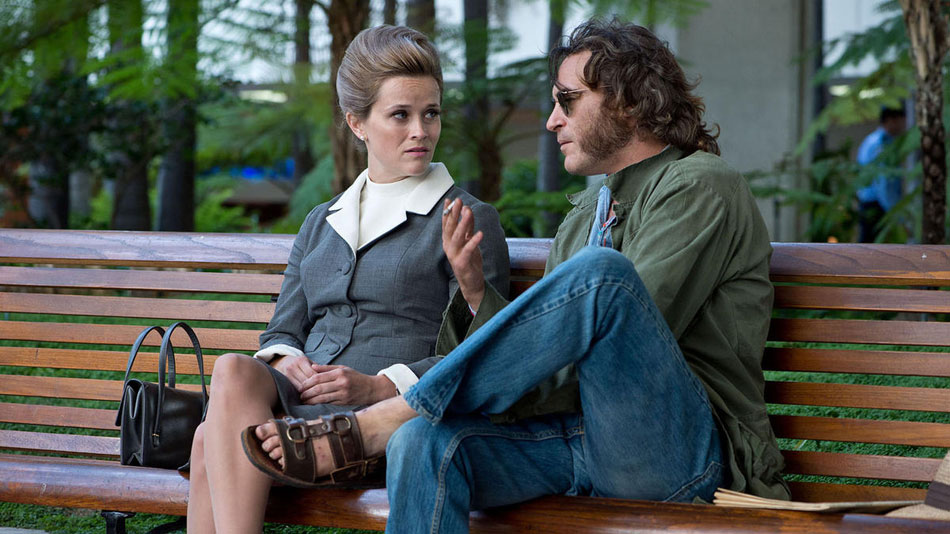
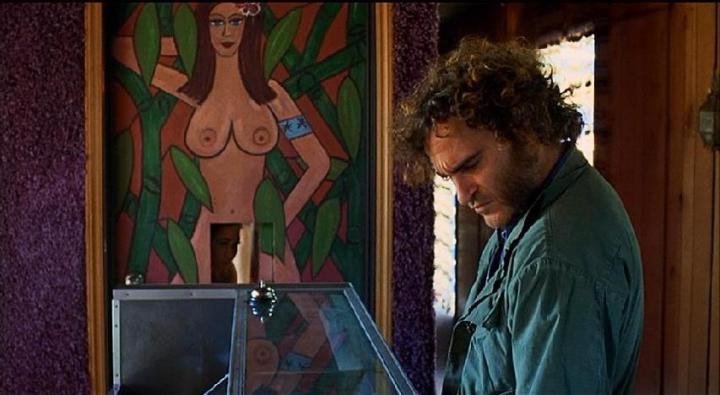

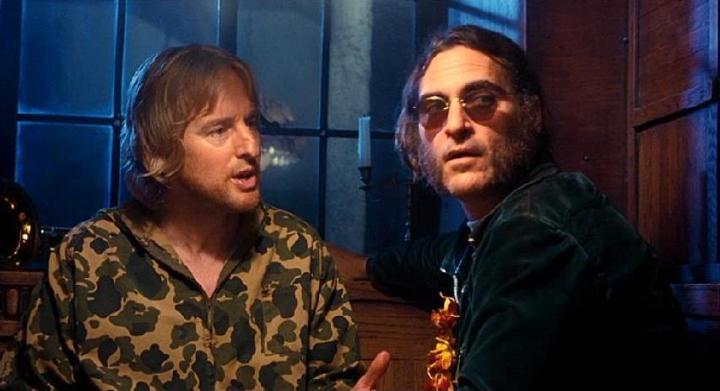
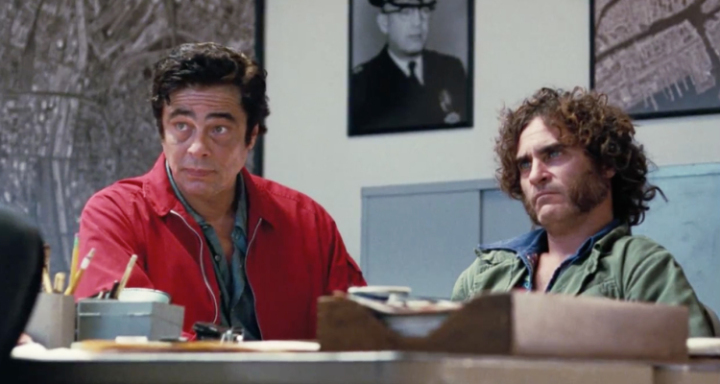
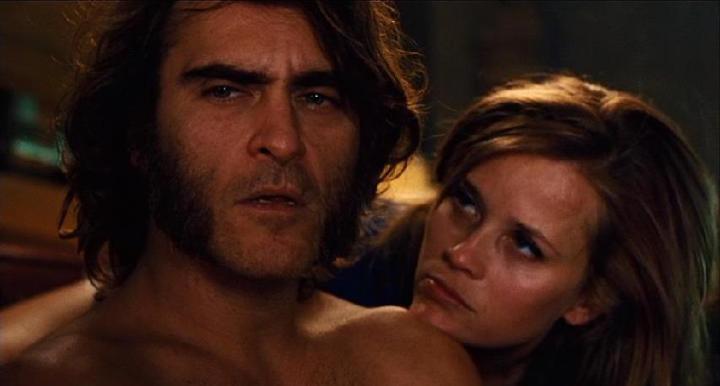
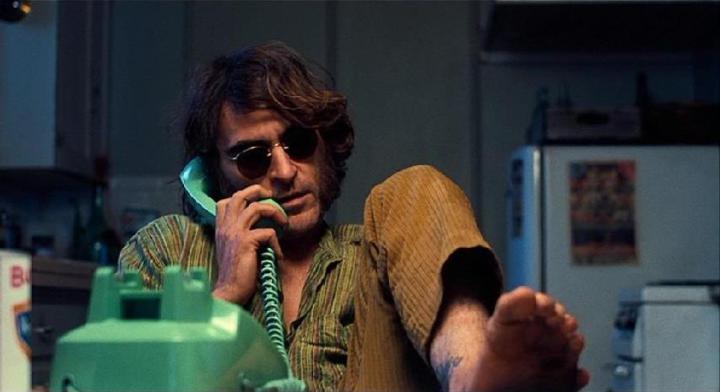
Out of curiosity, how many times have you seen The Master?
Twice. I doubt it will happen again. I just didn’t care.
It’s an amazing — and unusual — feat to employ moving camera that goes unnoticed.
I was so focused on deciphering the plot and keeping track of who’s connected to who that I didn’t notice just how many examples of this there are until my second view.
“I was so focused on deciphering the plot and keeping track of who’s connected to who that I didn’t notice just how many examples of this there are until my second view”
Sounds like a Pynchon novel, is there a bunch of obscure references too?
There are long, mobile camera shots in Pynchon novels?
” keeping track of who’s connected to who”
Fixed it.
As far as obscure references, it may depend on what you consider obscure.
The types of stuff that’s in his novels. When you cant even find out what he’s referencing online, its pretty obscure.
Unfortunately, that’s too non-specific for me to be sure. Would you call an address on Gummo Marx Way or jabs at Mormons in the FBI obscure?
After reading and studying Pynchon, references obscure and not so obscure define his work. Both GRAVITY’S RAINBOW as well as CRYING OF LOT 49 are challenges to even the most literary minds.
As ever with Pynchon’s writing, the labyrinthine plots offer myriad interconnecting cultural references. Understanding these references allows for a much richer reading of the work, but I have found that I mostly feel like I am not quite bright enough to get most of what he is trying to parody or communicate.
I have never read Pynchon, but one of the things I liked about Anthony Burgess was that he used words I had to look up and made references to things I only got much, much later.
Yeah, maybe I would have to know the context. His work contains a lot of words you have to look up, but not just regular words old archaic and old english words that aren’t even used anymore.
Sally makes an excellent point , in the podcast I mentioned PT Anderson explains his work as well as anyone I’ve heard thus far “Its like he has some kind of top secret information that the rest of us aren’t privy to.”
If you needed anymore reason to get hyped for the film PT was on WTF, I think is the first podcast he’s ever done. It was a pretty revealing interview too, as you would expect from a WTF interview. Ken, I know you wont listen so the highlights are.
– Stories of Tim Conway and PT Anderson’s dad hanging out at his house, getting drunk and trying to get pulled over
– A hilarious dirty story Ricky Jay told him on the set of Boogie Nights
– He didn’t make it through Gravity’s Rainbow
– A touching moment when he talks about the first time he met Philip Seymour Hoffman
He kind of lets on that the guy everybody thinks is Pynchon in the film isn’t.
Oh yeah, he tells a story about the time David Foster Wallace was his teacher, and he called him in the middle of the night about a term paper that was due the next day.
Here is the episode if anybody wants to listen.
http://www.wtfpod.com/podcast/episodes/episode_565_-_paul_thomas_anderson
This did surprisingly strong business here.
Definitely a must see. Not sure in Joaquin Phoenix is acting, though.
You didn’t like Mondo Jerry?
I’ll hate myself, but who or what is Mondo Jerry?
Sorry, Mungo Jerry not Mondo.
Now I know who it is, but not how it relates to Mr. Phoenix’s acting.
Just his look.
You know, I was around back then and even I have no clue what Mungo Jerry looked like, God knows that fucking song was inescapable.
Anderson — with help from his set designers — does a great job of creating an authentic atmosphere of the era without recourse to the more obvious choices, especially where the soundtrack picks are concerned.
The two Neil Young selections are lovely and fairly unexpected choices from his catalog (even if neither had been recorded by 1970, but so what? It’s not like they’re being played on a stereo). I had never heard of the band Can, but its “Vitamin C” over the neon title intro is a fine choice and hearing The Marketts’ sax-heavy “Here Come the Ho-Dads” (yup) after Jena Malone talks about Owen Wilson’s “innovative” playing made me laugh a lot.
I think “Vitamin C” is later than 1970, too.
Jaki Liebezeit was one of the greatest drummers to ever live.
Yeah, they played the bootleg band version of Journey Through The Past from the archives box set that came out a couple years ago. Have you ever seen the film Journey Through The Past, there is a really great scene where Neil confronts a record shop guy at the register who is selling his bootlegs.
I had never heard of that Ho-Dads song before, but I really liked it.
No, but I’m not that jazzed about Neil Young.
Well, it actually held pretty well, but with all the crap coming out this week and most of the Oscar nominated films being milked for all they’re worth, Thursday is the end of Inherent Vice at The Carolina.
I saw it last night and enjoyed it immensely. I had read mixed reviews, and hadn’t yet read the review of my go-to critic, Ken Hanke, until after I saw it. I knew that you hadn’t read Pynchon when you wrote “deliberately convoluted” and “willfully messy film version.” No, just very true to the book. It looked like the images in my head when I read it, which I suppose is the highest compliment for PT Anderson’s work. It was a film that only Pynchon could conjure.
How you became my go-to critic: I’ve taken our local film critic out here in Cali with a grain of salt for years. When he raved about “Neighbors,” and I saw a movie theater in my travels with a couple hours to kill, I thought, “Ok, we can probably more-or-less agree on a gross-out screwball flick.” What a burn! Seeking a reviewer to trust, I went to Rotten Tomatoes to find someone who agreed with me on “neighbors.” So far so good. A perk of the Information Age.